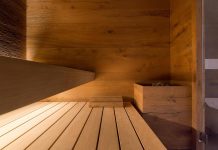Ingineria geotehnica este ramura ingineriei civile preocupata de comportamentul ingineresc al materialelor terestre. Ingineria geotehnica include investigarea conditiilor si materialelor subterane existente; determinarea proprietatilor fizice / mecanice si chimice relevante pentru proiectul luat in considerare, evaluarea riscurilor prezentate de conditiile locului; proiectarea lucrarilor de pamant si a fundatiilor de structura; si monitorizarea conditiilor locului, lucrari de terasamente si constructii de fundatii.
Un proiect tipic de inginerie geotehnica incepe cu o revizuire a nevoilor de proiect pentru a defini proprietatile materiale necesare. Urmeaza apoi o investigatie pe teren a proprietatilor de sol, roca, distributie a defectiunilor si a asternutului pe si sub o zona de interes pentru a determina proprietatile lor de inginerie, inclusiv modul in care vor interactiona cu, pe sau intr-o constructie propusa. digitallovetalk2.godaddysites.com Sunt necesare investigatii pe santier pentru a intelege zona in care se va desfasura ingineria. Investigatiile pot include evaluarea riscului pentru oameni, proprietati si mediu, din cauza pericolelor naturale, cum ar fi cutremure, alunecari de teren, alunecari, lichefierea solului, fluxuri de resturi si caderi de roca.
Un inginer geotehnic determina apoi si proiecteaza tipul de fundatii, lucrari de terasamente si / sau subgrade de pavaj necesare pentru construirea structurilor create de om. Fundatiile sunt proiectate si construite pentru structuri de diferite dimensiuni, cum ar fi cladiri inalte, poduri, cladiri comerciale medii-mari si structuri mai mici, in cazul in care conditiile solului nu permit proiectarea pe baza de cod. www.openlearning.com
Fundatiile construite pentru structurile de la sol includ fundatii superficiale si adanci. Structurile de retentie includ barajele pline de pamant si zidurile de retinere. Lucrarile la pamant includ terasamente, tuneluri, diguri, canalizari, canale, rezervoare, depozitarea deseurilor periculoase si depozitele sanitare.
Ingineria geotehnica este, de asemenea, legata de inginerie de coasta si oceanice. www.ted.com Ingineria costiera poate implica proiectarea si constructia de deseuri, porturi si jale. Ingineria oceanica poate implica sisteme de fundare si ancorare pentru structuri in larg, precum platforme petroliere.
Domeniile ingineriei geotehnice si geologia ingineriei sunt strans legate si au suprafete mari de suprapunere. Cu toate acestea, domeniul ingineriei geotehnice este o specialitate a ingineriei, unde domeniul geologiei ingineresti este o specialitate a geologiei. www.mobypicture.com
Istoria
Oamenii au folosit istoric solul ca material pentru controlul inundatiilor, pentru irigatii, santiere, fundatii de constructie si ca material de constructie pentru cladiri. Primele activitati au fost legate de irigare si controlul inundatiilor, asa cum s-a demonstrat prin urme de diguri, baraje si canale care dateaza de cel putin 2000 i.e.n. daltonclvw586.weebly.com Mohenjo Daro si Arappa in valea Indusului. Pe masura ce orasele s-au extins, structurile au fost ridicate sustinute de fundatii oficializate; Grecii antici au construit in special suporturi de tampoane si fundatii cu banda si pluta. Pana in secolul al XVIII-lea, insa, nu a fost dezvoltata o baza teoretica pentru proiectarea solului, iar disciplina era mai mult o arta decat o stiinta, bazandu-se pe experienta trecuta.
Cateva probleme de inginerie legate de fundatii, cum ar fi Turnul aplecat din Pisa, i-au determinat pe oamenii de stiinta sa inceapa sa ia o abordare mai bazata pe stiinta pentru examinarea sub-suprafatei. reallifenetwork9.huicopper.com Primele progrese au avut loc in dezvoltarea teoriilor presiunii pamantului pentru constructia zidurilor de retinere. Henri Gautier, un inginer regal francez, a recunoscut „panta naturala” a diferitelor soluri in 1717, idee cunoscuta ulterior drept unghiul de refacere al solului. Un sistem rudimentar de clasificare a solului a fost, de asemenea, dezvoltat pe baza greutatii unitare a unui material, care nu mai este considerat un bun indiciu al tipului de sol.
Mecanica geotehnica clasica a inceput in 1773 odata cu introducerea mecanicii Charles Coulomb (o fizica) la problemele solului. escatter11.fullerton.edu Folosind legile de frecare si coeziune pentru a determina adevarata suprafata de alunecare din spatele unui perete de retinere, Coulomb a definit din greseala un criteriu de esec al solului. Combinand teoria lui Coulomb cu teoria lui Christian Otto Mohr despre o stare de stres 2D, a fost dezvoltata teoria Mohr-Coulomb, o constructie grafica folosita si astazi.
Alte evolutii relevante din aceasta perioada includ: definirea lui Henry Darcy a conductivitatii hidraulice; Teoria lui Joseph Boussinesq (matematician si fizician) a distributiei stresului; Simplificarea lui William Rankine a teoriei presiunii pamantesti a lui Coulomb; si examinarea lui Albert Atterberg de consistenta lutului.
Ingineria geotehnica moderna a inceput in 1925 cu publicarea Erdbaumechanik de catre Karl Terzaghi (un inginer civil si geolog). lovelessonlist6.tearosediner.net Recunoscuta in general drept parintele mecanicii moderne a solului si a ingineriei geotehnice, cercetarile realizate de Terzaghi privind asezarea argilelor si esecul din cauza conductelor de sub baraj au fost considerate pamant.
Ingineri practicanti Inginerii
geotehnici sunt de obicei absolventi ai unui program de patru ani de inginerie civila si de multe ori detin o diploma de masterat. Inginerii geotehnici sunt de obicei autorizati si reglementati ca ingineri profesionisti (PE) in majoritatea statelor; in prezent doar California si Oregon au licente specializate in inginerie geotehnica. In Statele Unite, guvernele de stat vor autoriza in mod obisnuit inginerii care au absolvit o scoala acreditata ABET, au terminat cativa ani de experienta in munca si au trecut examenul de inginerie profesionala
Mecanica solului
In inginerie geotehnica, solurile sunt considerate un material trifazic compus din: particule de roca sau minerale, apa si aer. deanhxlq299.bearsfanteamshop.com Golurile unui sol, spatiile dintre particulele minerale contin apa si aerul.
Proprietatile ingineresti ale solurilor sunt afectate de patru factori principali: marimea predominanta a particulelor minerale, tipul de particule minerale, distributia marimii boabelor si cantitatile relative de mineral, apa si aer prezente in matricea solului. Particulele fine (fine) sunt definite ca particule cu diametrul mai mic de 0,075 mm.
Proprietatile solului
Urmatoarele proprietati ale solurilor sunt utilizate de inginerii geotehnici in analiza conditiilor santierului si proiectarea lucrarilor de pamant, a structurilor de retentie si a fundatiilor. cesarzcrw290.yousher.com
Greutatea unitatii Greutatea
totala a unitatii: Greutatea cumulata a particulelor solide, a apei si a aerului din material pe unitatea de volum. Retineti ca faza aeriana este adesea considerata lipsita de greutate.
Greutate unitara uscata: Greutatea particulelor solide ale solului pe unitatea de volum.
Greutate unitara saturata: Greutatea solului atunci cand toate golurile sunt umplute cu apa astfel incat sa nu existe aer pe unitatea de volum. jaidenmfri744.over-blog.com Retineti ca acest lucru se presupune in mod obisnuit sub nivelul apei.
Porozitatea
Raportul dintre volumul golurilor (care contine aer si / sau apa) intr-un sol fata de volumul total al solului exprimat in procente. O porozitate de 0% implica faptul ca nu este nici aer, nici apa in sol.
raportul de gol este raportul dintre volumul golurilor si volumul particulelor solide dintr-un sol. hub.docker.com Raportul gol este matematic legat de porozitate si este mai frecvent utilizat in formulele geotehnice decat porozitatea.
Permeabilitate
O masura a capacitatii apei de a circula prin sol, exprimata in unitati de viteza.
Consolidation
As a noun, the state of the soil with regards to prior loading conditions; soils can be underconsolidated, normally consolidated or over-consolidated.
As a verb, the process by which water is forced out of a soil matrix due to loading, causing the soil to deform, or decrease in volume, with time. digitallovelist0.wpsuo.com
Shear strength
Amount of shear stress a soil can resist without failing.
Atterberg Limits
Liquid limit, plastic limit, and shrinkage limit, related to the plasticity of a soil. Used in estimating other engineering properties of a soil and in soil classification.
Geotechnical investigation
Geotechnical engineers perform geotechnical investigations to obtain information on the physical properties of soil and rock underlying (and sometimes adjacent to) a site to design earthworks and foundations for proposed structures, and for repair of distress to earthworks and structures caused by subsurface conditions. www.openlearning.com A geotechnical investigation will include surface exploration and subsurface exploration of a site. Sometimes, geophysical methods are used to obtain data about sites. Subsurface exploration usually involves soil sampling and laboratory testing of the soil samples retrieved.
Surface exploration can include geologic mapping, geophysical methods, and photogrammetry, or it can be as simple as an engineer walking around on the site to observe the physical conditions at the site. deanukyn917.almoheet-travel.com Geologic mapping and interpretation of geomorphology is typically completed in consultation with a geologist or engineering geologist.
To obtain information about the soil conditions below the surface, some form of subsurface exploration is required. Methods of observing the soils below the surface, obtaining samples, and determining physical properties of the soils and rock include test pits, trenching (particularly for locating faults and slide planes), borings, and cone penetration tests (CPT) or standard penetration test (SPT). CPT allows continuous recording of soil changes with depth, whereas SPT only records major changes at discrete steps of 150 mm (6 in); however, SPT allows soil sampling for laboratory testing. josuewtht857.cavandoragh.org
Borings come in two main varieties, large-diameter and small-diameter. Large-diameter borings are rarely used due to safety concerns and expense, but are sometimes used to allow a geologist or engineer to visually and manually examine the soil and rock stratigraphy in-situ. Small-diameter borings are frequently used to allow a geologist or engineer to examine soil or rock cuttings from the drilling operation, to retrieve soil samples at depth, and to perform in-place soil tests. A cone penetration test is typically performed using an instrumented probe with a conical tip, pushed into the soil hydraulically. paxtoneclv770.over-blog.com A basic CPT instrument reports tip resistance and frictional resistance along the friction sleeve, which is located just above the tip. CPT data has been correlated to soil properties. Sometimes instruments other than the basic CPT probe are used.
Geophysical exploration is also sometimes used; geophysical techniques used for subsurface exploration include measurement of seismic waves (pressure, shear, and Rayleigh waves), using surface-wave methods and/or downhole methods, and electromagnetic surveys (magnetometer, resistivity, and ground-penetrating radar). israelsnlq696.shutterfly.com
Soil sampling
Soil samples are obtained in either “disturbed” or “undisturbed” condition; however, “undisturbed” samples are not truly undisturbed. A disturbed sample is one in which the structure of the soil has been changed sufficiently that tests of structural properties of the soil will not be representative of in-situ conditions, and only properties of the soil grains can be accurately determined. An undisturbed sample is one where the condition of the soil in the sample is close enough to the conditions of the soil in-situ to allow tests of structural properties of the soil to be used to approximate the properties of the soil in-situ. In general, methods intended to collect undisturbed samples cost more than disturbed samples. johnathanpkpd.bloggersdelight.dk It should be noted that the discussion of soil disturbance is almost entirely in reference to clay and silty-clay soils. Sands can only be collected undisturbed using very expensive ground freezing techniques, and are rarely practiced.
A variety of soil samplers exist to meet the needs of different engineering projects and budgets. Small projects, those predicting minor stress changes and straightforward topography, can be suitably designed with disturbed samples. opencoachtv4.bravesites.com Projects involving large stress changes or complicated topography will require undisturbed samples for stress-strain-strength testing in a laboratory. Speaking terrestrially, the standard penetration test (SPT), which uses a thick-walled split spoon sampler, is the most common way to collect disturbed samples. Piston samplers, employing a thin-walled tube, are most commonly used for the collection of undisturbed samples. More advanced methods, such as the Sherbrooke block sampler, can be employed for research quality soil sample collection, but it has a limited depth of recovery.
Offshore soil collection introduces many difficult variables. In shallow water, work can be done off a barge. In deeper water a ship will be required. Deepwater soil samplers are normally variants of Kullenberg-type samplers, a modification on a basic gravity corer using a piston (Lunne and Long, 2006). Seabed samplers are also available, which push the collection tube slowly into the soil.
Laboratory tests
A wide variety of laboratory tests can be performed on soils to measure a wide variety of soil properties. Some soil properties are intrinsic to the composition of the soil matrix and are not affected by sample disturbance, while other properties depend on the structure of the soil as well as its composition, and can only be effectively tested on relatively undisturbed samples. Some soil tests measure direct properties of the soil, while others measure “index properties” which provide useful information about the soil without directly measuring the property desired. Some of the more commonly performed laboratory tests include: Atterberg limits, California bearing ratio, hydraulic conductivity, consolidation, particle-size analysis, soil compaction, triaxial shear, unconfined compression, density index (called relative density in USA) and water content tests.



















